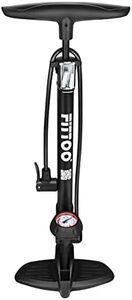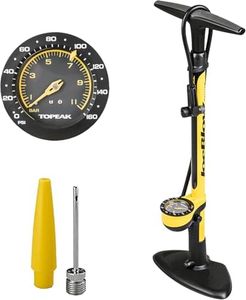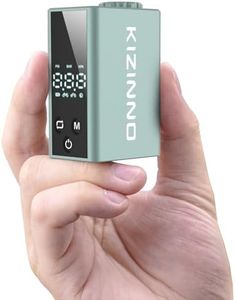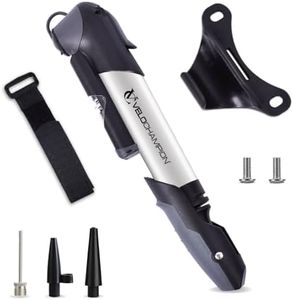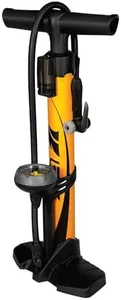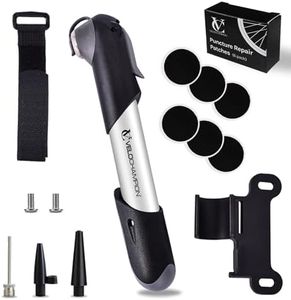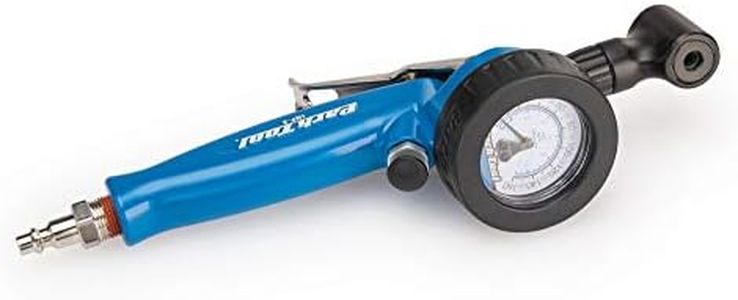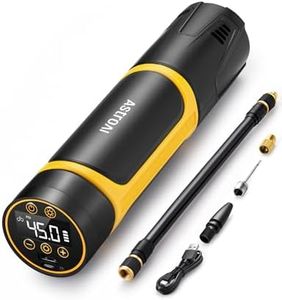We Use CookiesWe use cookies to enhance the security, performance,
functionality and for analytical and promotional activities. By continuing to browse this site you
are agreeing to our privacy policy
10 Best Bike Pumps
From leading brands and best sellers available on the web.Buying Guide for the Best Bike Pumps
Choosing the right bike pump can make inflating your tires faster, easier, and more effective, leading to smoother and safer rides. The type of bike you own, where you'll be pumping your tires, and how often you expect to use the pump should all influence your choice. Understanding the key features of bike pumps will help you pick the best one for your needs and ensure you're always ready to ride.Pump TypeBike pumps come mainly as floor pumps (also called track pumps), mini pumps, and CO2 inflators. Floor pumps are larger, more stable, and designed for high-volume air delivery, making them great for home use or garages. Mini pumps are compact and portable, ideal for taking on rides in case of a flat. CO2 inflators use compressed cartridges for quick inflation, suiting emergencies when time matters. To pick the right one, consider if you want a pump primarily for at-home maintenance (floor pump), on-the-go fixes (mini pump), or emergency quick fixes (CO2 inflator).
Valve CompatibilityBike tires mainly use either Presta or Schrader valves. Some pumps work with both valve types, while others are specific to one. This is important because you'll need a pump that matches your bike’s valves. Pumps with dual-head or smart-head designs can adjust automatically or fit both types, offering versatility. To decide, check your bike’s valve and look for a pump that fits it, or choose a universal-fit option if you ride different bikes.
Pressure GaugeA pressure gauge shows the air pressure as you inflate your tire. This feature is vital for accuracy, since proper tire pressure ensures a comfortable, safe, and efficient ride. Some pumps have built-in gauges, while others do not. Analog (dial) gauges are easy to read, and digital ones offer precise readings. If maintaining exact pressure is important for your style or type of biking, pick a pump with a clear, accurate gauge. For casual use, this feature might be less important.
Maximum PressureThis specification tells you how much air pressure the pump can deliver, usually measured in PSI (pounds per square inch) or Bar. Road bike tires often need higher pressure than mountain bike tires. Some pumps can only reach low to moderate pressures, while others go much higher. If you have road bikes or bikes that need high pressure, choose a pump with a higher maximum rating (e.g., 120 PSI and above). For mountain or hybrid bikes, a lower max pressure is often sufficient.
Size and PortabilityPump size affects its portability and convenience. Larger floor pumps are easier to use and inflate tires faster, but are best kept at home. Mini pumps are smaller and lighter, perfect for carrying in a bag or mounting on your bike during rides. Choose a size that matches your needs—home maintenance or portability for rides. Frequent travelers and commuters may prioritize lightweight, compact options.
Build Quality and MaterialsThe durability and feel of a bike pump depends on the materials used, such as plastic, aluminum, or steel. Sturdier materials last longer and provide better stability but can add weight. Cheaper pumps often use more plastic and may wear out quicker. For frequent use, choose a robust pump with metal components. For occasional or emergency use, a lighter model may be sufficient.
Inflation EfficiencyInflation efficiency refers to how quickly and easily the pump delivers air to your tire. Larger barrels on floor pumps fill tires faster with fewer strokes. Mini pumps usually require more effort and pumps per fill. If you value quick inflation with less effort, look for a pump known for high efficiency. This is especially important if you have high-volume tires or want to save time.
